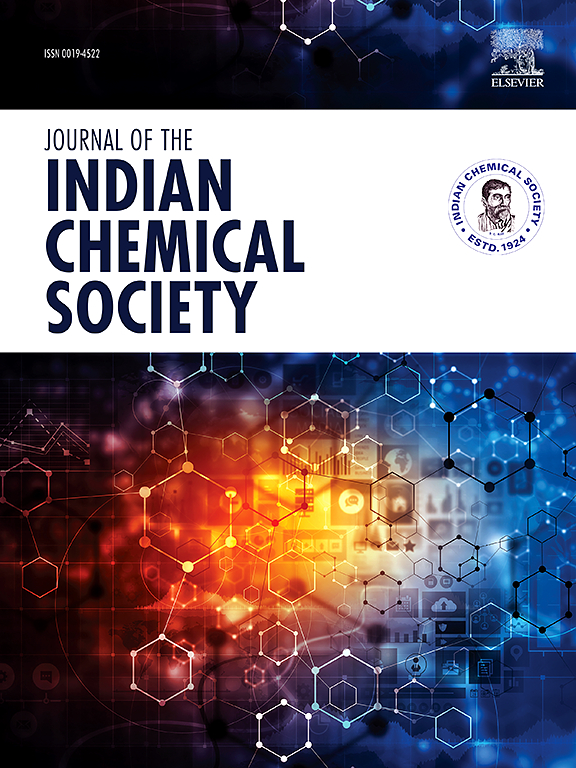Comparative dielectric studies of aqueous D-arabitol and xylitol solution using a time domain reflectometry technique (TDR)
IF 3.2
4区 化学
Q2 CHEMISTRY, MULTIDISCIPLINARY
引用次数: 0
Abstract
This research employs TDR to demonstrate the complex permittivity spectra for aqueous xylitol and d-arabitol solution across an extensive frequency spectrum span from 10 MHz to 30 GHz and this data were subjected to analysis through the application of the Cole-Davidson Model, utilizing a non-linear Least Squares fitting approach to determine the parameters associated with dielectric relaxation. The experimental measurements were performed at four different temperatures and different volume fractions of water. The comparative analysis of the dielectric parameters reveals that there is increase dielectric constant (ε0) with increasing volume fraction of water and the relaxation time (τ) decreases for both the system, having greater magnitude for aqueous xylitol than aqueous D-arabitol suggesting increased interaction with solutes. This study investigates intermolecular interactions through the application of the Kirkwood correlation factor in conjunction with thermodynamic parameters and higher hydration parameter in aqueous xylitol solution than D-arabitol signifies effect of conformation of OH group. The theoretical dielectric constant of the mixture was calculated utilizing the hydrogen bonding framework given by Alenka Luzar.

用时域反射技术(TDR)比较d -阿拉伯糖醇和木糖醇水溶液的介电特性
本研究使用TDR来展示木糖醇和d-阿拉伯糖醇水溶液在10 MHz到30 GHz的广泛频谱范围内的复杂介电常数谱,并通过Cole-Davidson模型对这些数据进行分析,利用非线性最小二乘法拟合方法来确定与介电弛豫相关的参数。实验测量是在四种不同温度和不同体积分数的水下进行的。对介电参数的比较分析表明,随着水体积分数的增加,两种体系的介电常数(ε0)均增加,弛豫时间(τ)减小,木糖醇水溶液的介电常数(ε0)大于d -阿拉伯糖醇水溶液,表明与溶质的相互作用增加。本研究通过应用Kirkwood相关因子结合热力学参数考察木糖醇水溶液的分子间相互作用,木糖醇水溶液的水化参数比d -阿拉伯糖醇高,表明OH基团构象的影响。利用Alenka Luzar给出的氢键框架计算了混合物的理论介电常数。
本文章由计算机程序翻译,如有差异,请以英文原文为准。
求助全文
约1分钟内获得全文
求助全文
来源期刊
CiteScore
3.50
自引率
7.70%
发文量
492
审稿时长
3-8 weeks
期刊介绍:
The Journal of the Indian Chemical Society publishes original, fundamental, theorical, experimental research work of highest quality in all areas of chemistry, biochemistry, medicinal chemistry, electrochemistry, agrochemistry, chemical engineering and technology, food chemistry, environmental chemistry, etc.

 求助内容:
求助内容: 应助结果提醒方式:
应助结果提醒方式:


